Life is Getting Better: Why Don’t We Believe it?
The persistent gap between reality and perception
Photo by Kanhaiya Sharma on Unsplash
According to just about all decent measures the present is better than the past. It is likely that the future will be better than the present. Most people believe the opposite. The mass media promotes this false opposite. The long-established label for this view is reactionary.
The common conviction that things are getting worse presents a major obstacle to the growth and success of life extension and biostasis. If life is getting worse, the future in which we hope to live or to wake from biostasis will be a horrible place, perhaps nightmarish and apocalyptic. Why would you want to take a journey into such a world?
Excessively and misguidedly negative views of the present and future have other bad effects. Overly gloomy views can spur ill-considered and panicky reactions both individually and at the level of policy. These can be expensive and draw resources from more deserving areas. These policies can also have bad side effects, such as when fear of nuclear power led to more dirty energy sources and then to expensive and unreliable sources. Unreasonable gloom seems to be feeding a huge rise in depression, especially in young people.
My interest in countering gloom and doom is straightforward. I want humanity to flourish. I want every individual to have a chance to live much longer and better. Personally, I want to live longer and better. Falsely pessimistic beliefs about the future will reduce my chances and yours. I am much more concerned about passive/fatalistic pessimism than an evaluation-based pessimism that leaves open the objective of corrective action.
The more uninformed a person is about real trends, the more pessimistic they are about the future.
Just how negative are people’s beliefs about progress? I will show that people’s beliefs about the last few decades are highly negative; they are incorrect; and the more uninformed a person is about real trends, the more pessimistic they are about the future. Despite this last point, disturbingly there is evidence that those with more formal education people do no better in tracking of reality in important respects than the less formally educated. As Hans Rosling wrote on p.9 of his highly recommended book Factfulness: “Some of these groups are even worse than the general public”
Real concerns
A popular parody of views like mine is to lyingly assert that I am a Dr. Pangloss, a unmitigated optimist who believes that, somehow, everything just works out and nothing could be better than it is right now. (I’ll set aside the clear tension between “things will get better” and “this is the best of all possible worlds.”)
Things obviously don’t “work out” all the time. Plenty of horrible things happen and are still happening – even as, overall, things have been getting better. The long-term trend for violence is down but still we see the mass deaths from Stalin and Hitler and China. In fact, one sign of cultural decay is that such mass deaths are often seen as a good thing – something that reduces human numbers, human effects on the environment, and consumption. As Rosling put it, things can be bad while also getting better.
Things get better because we believe they can and because we then work to make them better.
Some people seem to believe that if we believe things are generally getting better that we will slack off on making things better. They confuse a passive optimism with active optimism. On the contrary, things get better because we believe they can and because we then work to make them better. If we are convinced that the world and its direction is against us, we will are likely to be discouraged from efforts at betterment.
Despite all the measures by which the world (or most of it) improve over time, I am concerned about trends in beliefs and policies. I am concerned about growing fear, regulation, degrowth, anti-capitalism, unreliable energy, and safetyism, and demographic decline leading to stagnation, an innovation famine, plummeting population, and the decline of a truly scientific mindset.
There are reasonable questions about how much we can achieve positive outcomes without negatives – not growth and pollution because they are not permanently tied together, but material abundance and human laziness and abuse of free time.
These philosophical, cultural, ideological, and political trends mean that continued progress is not inevitable. Nothing in this or other essays is meant to suggest that progress just happens. I am opposing false gloom precisely because progress is not inevitable (why would I care otherwise?) and certainly can be slowed down drastically.
Past Golden Ages and Future Ash Ages
In the minds of many, our lives and the world are getting worse and this will continue, so that the future will be worse still. This implies that the past must have been better. Indeed, many cultures include myths of idyllic days of yore. In Western culture, the Arcadian myth conveyed the idea of a past age of pastoralism and harmony with nature. The Garden of Eden embodies some elements of the same idea.
This concept also informed Renaissance mythology. The Golden Age idea similarly saw humans and the world as being corrupted by civilization, production, and rationality (especially in the late 18th to mid-19th century Romantic version in which the past and nature are glorified). The Golden Age as found in Greek mythology describes the decline of the state of peoples though five ages, from Gold to Silver to Bronze and on to the Heroic and Iron ages.
The mythical Golden Age was a time of primordial peace, harmony, stability, and prosperity where perpetually youthful people had no need of work to feed themselves. In South Asia, related concepts appear in Vedic or ancient Hindu culture which saw history as cyclical, with only one age (Satya Yuga) being the Golden Age. Related ideas appear in the ancient Middle East and throughout the ancient world.
We have been used to hearing about “the good old days”. Today, we are more likely to hear this in the form of: “We are destroying the planet and ourselves.”
If the past was golden, the future is ash. Popular narratives of the future revolve around violence, starvation, destruction, devastation, hopelessness, slavery, conquerors, dust, and radiation. Let’s set aside novels and TV shows and just consider the movies.
The 1950s through the 1970s brought us movies such as The Day the World Ended (1955), On the Beach (1959), The Day the Earth Caught Fire (1961), Dr. Strangelove (1964), Planet of the Apes (1968) – followed by many more, including Planet of the Apes (2001), and Rise of the Planet of the Apes (2011), The Omega Man (1971), The Andromeda Strain (1971), and Night of the Living Dead (1968) and Dawn of the Dead (1978), Holocaust 2000/The Chosen (1977), Mad Max (1979) – followed by Mad Max 2 (1981), Mad Max: Beyond Thunderdome (1985), Mad Max: Fury Road (2015), Soylent Green (1973), Zardoz (1974), Logan’s Run, (1976), and Damnation Alley (1977).
The 1980s and ‘90s thrilled us with Bladerunner (1982), The Day After (1983), When the Wind Blows (1986), The Terminator (1984), Terminator 2: Judgment Day (1991) and the sequels, 12 Monkeys (1995), Day of the Dead (1985) and its sequels and remakes and all the other zombie movies, Waterworld (1995), and The Matrix (1999) and its sequels.
The new millennium didn’t change our taste for apocalypse and disaster. We were treated to: World War Z (2013), 28 Days Later (2002), 28 Weeks Later (2007), The Road (2009), Children of Men (2006), The Island (2005), Snowpiercer (2013), The Day After Tomorrow (2004), Equilibrium, (2002), The Book of Eli (2010), Geostorm (2017), Cargo (2017), How it Ends (2018), Mortal Engines (2018), Extinction (2018), and A Quiet Place (2018). Most recently, we have seen Light of my Life (2019), I Am Mother (2019), IO (2019), Songbird (2020) – a movie about Covid-23, and The Covid-19 Pandemic (2021). Oh, wait, that last one wasn’t a movie, it was just surreal.
It’s close to impossible to find generally positive portrayals of the future. No wonder so many people reflexively expect the future to be a miserable place they would rather not see.
Mistaken gloom
In his 2017 book, Progress: Ten Reasons to Look Forward to the Future, historian of ideas Johan Norberg relates the results of a 2005 study he commissioned looking into the views of 1,000 Swedes on global development. Swedes’ answers to eight questions revealed that, in every age and income group, they were wrong on all questions. 73% thought that hunger had increased and 76% that extreme poverty had increased. This was during a period when they had both fallen faster than ever before in history. Disturbingly, those who had been through higher education knew the least about the progress that had been made.
Those who had been through higher education knew the least about the progress that had been made.
It’s not just the Swedes. A YouGov poll conducted in 2015 found that only 5% of Britons thought the world was getting better while 71% said it was getting worse. Respondents in the UK badly underestimated progress in education, health, and fertility reduction in the world. Notably, the results from those with university degrees are not better than the average results. Based on several questions, they are worse. [Norberg, p. 206]
A couple of years ago as I write this, I engaged in a debate at the Oxford Union with some highly educated people. After I had made the case for the desirability of extended longevity, including anticipating objections based on population growth, literature professor N. Katherine Hayles spoke. She reluctantly granted that it might be true that we were polluting less per capita but said she could not imagine that we polluted less in total, including where she lived. If I had been given the opportunity to respond, I would have asked her to step outside and look and smell the air where she was in Los Angeles. Then go and look at pictures of L.A. air a few decades earlier.
More broadly, I would have pointed out that it is not remotely implausible for pollution to fall both relative to population and in total. The population of the USA is growing at around 0.58%. If we can reduce pollution by, say, 0.75% annually, pollution falls absolutely as well as relatively.
In reality, air pollution in major cities has been falling for at least half a century. Soot over Manhattan fell by two-thirds from the end of WWII to the end of the century. In Pittsburgh, Cincinnati, and Detroit, the average number of days of poor air quality fell by around half in the period from 1978 to 1992. In Los Angeles, the number of days with unhealthy air quality fell by half in one decade, from 1985 to 1995.
Between 1980 and 2014 there was a reduction of more than two-thirds in six major air pollutants: volatile organic compounds, nitrogen dioxide, direct particulate matter, carbon monoxide, sulfur dioxide, and lead.
According to the US Environmental Protection Agency, between 1980 and 2014 there was a reduction of more than two-thirds in six major air pollutants: volatile organic compounds, nitrogen dioxide, direct particulate matter, carbon monoxide, sulfur dioxide, and lead. You can see similar trends in the United Kingdom. The concentration of smoke and sulfur dioxide increased in London for 300 years from the late sixteenth century but then fell rapidly. As Bjørn Lomborg put it, “the London air has not been cleaner than today since the Middle Ages.” [Lomborg, 2001.]
In the US and other wealthy countries, water quality has been improving for decades, greatly expanding the number of streams and lakes suitable for fishing and swimming. The number of oil spills has fallen dramatically – by 99% between 1970 and 2014. Deforestation in wealthy countries has stopped and reversed. [Moore & Simon, 2002; Norberg, 2017.]
The Gapminder Foundation has worked mightily to show the gulf between the actual state of the world and its trends and the public’s understanding. The Foundation asked 12 basic fact questions of the general public in 14 wealthy countries. Respondents choose between three alternatives for each question. Purely at random, monkeys could pick 4 out of 12 correct answers. Alas, the score for humans was a sad 2.2.
Since people do much worse than random chance, they must have inaccurate assumptions based on misleading or outdated information. Hans Rosling, professor of international health, discussed these results and the causes in his excellent book, Factfulness: Ten Reasons We’re Wrong About the World – and Why Things Are Better than You Think.
A recent survey asked, “All things considered, do you think the world is getting better or worse, or neither getting better nor worse?”. In Sweden 10% thought things are getting better, in the US there were only 6%, and France and Australia were the gloomiest at 3%. The most positive were China at 41% and Indonesia at 23%.
The opinion research organization Ipsos MORI conducted a detailed survey of 26,489 people across 28 countries. [Jackson 2017; Our World in Data ref.1 & 2] The first two charts show that people in every country have falsely negative views of changes in global extreme poverty and in child mortality. 52% believe that the percentage of people in extreme poverty (< int-$1.90 per day) is rising. In actuality, this percentage has been declining for two centuries. The reduction in extreme poverty has accelerated in the last 20 years.
On the flip side, the number of people who live on over 10 dollars per day increased by 900 million in the last 10 years. This is not to say that everyone is doing just fine. 730 million people are living on less than int-$1.90 per day. We can expect that number to still be around 500 million in 2030 since the world’s very poorest economies are stagnating.
The same mismatch between the reality of global progress and subjective, uninformed (or misinformed) belief exists when we consider child mortality. On average only 39% know that the mortality of children is falling. In the USA, only 26% answered correctly, and 34% in Britain. Yet the data clearly show that the “child mortality rate in both the less- and least-developed countries has halved in the last 20 years to 3.9%”. It’s not a recent trend. That’s a 90% improvement compared to two centuries ago.
Again, in this area, progress has accelerated. Here are the percentages dying in the first five years: 1900: 36.2%. 1960: 18.5%. 1990: 9.32%. 2017: 3.9%. Plenty of room for improvement remains since nearly 15,000 children still die per day.
When people were asked “over the next 15 years, do you think living conditions for people around the world get better or worse?”, 35% answered “better”, 27% “stay the same”, and 29% “will get worse” (with 9% “do not know”). Japan was the least hopeful (10% better, 44% the same, 26% worse) with France and Belgium the gloomiest (49% worse). The percentage expecting living conditions to improve was 27% in the United States, 25% in Great Britain, and 18% in Germany. Interestingly, the most hopeful were all low-income or lower-middle income countries one generation ago (1990): Kenya (68%), Nigeria (67%), India (65%), China (58%), Indonesia (56%), and Peru (49%).
In 1800 there were fewer than 100 million literate people of that age; today there are 4.6 billion.
In 1820 only 10% of people older than 15 years were literate; in 1930 it was one in three and now we are at 86% globally. From a different perspective, in 1800 there were fewer than 100 million literate people of that age; today there are 4.6 billion. When asked about literacy rates today, in the UK, only 8% answered correctly – but only 4% of those with a university education! In the US, 22% answered correctly.
There are “softer” measures of the quality of life in societies that I cannot address here. I will merely quote Andrew Sullivan: “in the midst of tremendous gains for gays, women, and racial minorities, we still insist more than ever that we live in a patriarchal, misogynist, white supremacist, homophobic era.” He also notes: “The more progress we observe, the greater the remaining injustices appear.” [Sullivan 2020].
Those with more optimism about people and the world getting better off in the next 15 years answered more questions correctly. Those who are pessimistic are much less likely to have a sound understanding about what is happening in the world.
When in the past would you prefer to live?
How can you make a dent in someone’s pessimism when you have only a couple of minutes? The pessimistic answer is: “You can’t! Forget about it.” A more hopeful attitude looks for a shortcut. Here’s what I have often done:
You are talking to someone who clearly thinks the world has gotten worse and will continue down a path of immiseration, environmental destruction, resource depletion, loss of freedom and dignity, and increasing violence. Ask them this question: “When in the past would you prefer to live, compared to today?” Help them out a little. (You can customize your help a bit to fit their sex and race – or their interest in those factors.) Use clear and vivid examples. Ask them: Would you prefer to live back when
There were no painkillers? What if you had to have a tooth pulled or a leg amputated or injured your back?
There were no antiseptics? If you need surgery (or what passed for surgery), you would be about as likely to die from infection as from the reason for the operation.
Women could not own property and had no vote?
The streets were full of filth, human and animal feces, and rats?
Slavery was common?
War was perpetual and conscription universal?
You would lose most of your children as infants and you/your wife had a high chance of dying when giving birth?
How has the world changed since you were born?
Here’s a quick, easy, educational, and fun thing to try – and to send to your friends, pessimist or otherwise. Go to this URL to examine “your life in numbers”:
You’ll find a concise summary of six important ways in which the world has changed for the better over the last 50 years. For instance, globally: Life expectancy has increased from 56 to 72; infant mortality has fallen 72%; average income per person rose 372%, after adjusting for inflation; the food supply increased by 22%; the length of schooling increased 110%; and political freedom rose by 55%.
But the fun part comes when you plug in your year and country of birth. Using the massive database at HumanProgress.org, you will then see how your country has changed since you came into existence in terms of the six measures above. You can also plug in another country for comparison. Here are my results:
Income per person between the USA and UK looks wrong or at least outdated. Economic growth has been stronger in the USA than in the UK for years and the gap has compounded.
This interactive feature only hints at the remarkable depth and breadth of data available on this website. HumanProgress describes itself as “a data-driven educational website devoted to improving the public's understanding of the state of the world.” Statistics come from reliable third-party sources. You can easily drill down into all kinds of measures of progress. Under “Find Data”, you will find 2259 datasets. You can also dive into the material through around 40 topics. If you like exploring numbers on Worldometer, you will find this absorbing.
Here are some other illustrations of global improvements.
Global food supply per person has been growing for decades:
See here at Our World in Data for more.
Whenever there is a plane accident or near-accident, many of us believe air travel is getting more dangerous. The real trend is strongly toward greater safety:
Air pollution remains a serious problem in some countries but the trend from 1700 to 2016 is down for suspended particulate matter:
The number of oil spills each year has decreased tenfold compared to the 1970s. From ITOPF.
You certainly would not get the impression from the news but climate-related deaths have continually declined. Since 1920, the decline is more than 97%.
In the USA, catastrophic losses as a percentage of GDP have almost halved in the last 40 years. This observation is consistent with a global plunge in vulnerability trends. The global average mortality rate has fallen by 6.5 times and the global loss rate has fallen by almost 5 times between 1980-89 and 2007-16. As societies become wealthier, mortality and vulnerability decline.
Given that the oceans are rising by two or three millimeters per year (with no acceleration), you might reasonably expect that we are losing global land area. In fact, the opposite is true. Between 1985 and 2015, reports Roger Pielke, Jr., global sea levels rose by about 60 millimeters (about 2.4 inches). This increased global coastal land area by almost 34,000 square kilometers which, as Pielke notes, is about the size of Belgium.
Some of this is due to tectonic events such as Japan’s January 4, 2024 7.6 Noto Peninsula earthquake which raised the coast and created in some places more than 200 meters of new shoreline. But it is also due to human activity from damming and building dykes to drainage to building of new land out of the sea. This conclusion appears to be widely shared by researchers.
Why so gloomy?
What factors strengthen pessimism and unrealistically gloomy beliefs about the present and the future? It’s surely unnecessary to mention the news factor. More than ever, the working motto of most media is: “If it bleeds, it leads.” The news typically presents us with a tiny selection of the worst events of the last few hours. New stories grab the viewer’s attention by provoking fear with a “teaser”. They want the viewer to stay with them so they suggest that the solution for reducing that fear will be found in the news story. They leave the viewer with more despondency, not less, and wanting more information.
Whenever we are subjected to “the news” – whether in the old-fashioned form on TV, radio, or newspaper, or online – we are bombarded with a concentrated beam of negativity, of violence, hatred, conflict, accidents, disasters, accusations, and fears. Others have provided evidence that this fiendish and entropic signal makes us more depressed. Isn’t that surprising!
Not only are we drowned in negative stories, the trend shows this problem getting worse:
Fear and worry are tools for survival, productions of evolution. In our culture, the context has changed drastically. We are bombarded by negative inputs. And these are bad things that we can usually do little or nothing about. Positive things typically happen over much longer periods of time than negative things. What takes years to build can be destroyed in a moment.
And even without the media distorting our view, our own psychology creates distortion aplenty. The availability heuristic concerns how easy it is to extract something from memory. The more memorable an incident is, the more probable we think it is. Bad news tends to stick in the mind better and is more easily recalled. There is also “they psychology of moralizing”. Complaining and criticizing sends a signal to others that you care about them. “Bad” information usually gets processed more thoroughly than “good” information.
Our tendency toward “declinism” – a predisposition to view the past favorably and worry that the future is going to be bad – seems to be due to the combination of two factors: the “reminiscence” bump and the positivity effect. The former was identified in studies from the late 1980s and early 1990s.
Researchers showed that when they asked 70-year-olds to recall autobiographical memories, they tended to best remember events that happened to them at around the ages of 10-30. Recall dropped for events that happened when the participants were aged between 30-60, and then increased again for ages nearer to 70. So, you’re more likely to remember things that happened to you in late childhood or early adulthood.
The positivity effect is the idea that as people get older, they tend to experience fewer negative emotions, and they’re more likely to remember positive things over negative things. The combination of the reminiscence bump and the positivity effect means that:
people are more likely to remember events from late childhood or early adulthood, and critically more likely to remember positive events from the past. In other words, you remember your younger years more favourably, which might go some way to explaining why some people experience declinism. [Etchells, 2015.]
I have shown that most people believe that life is getting worse. I’ve given or pointed to strong evidence that this belief is mistaken. Over time, life is getting better in numerous important ways. And I’ve briefly noted some of the factors shaping our excessively pessimistic beliefs.
In future entries, I will cover the Simon-Ehrlich bet and look at the appalling number of bad pessimistic predictions – a record of failure from which we fail to learn. I will also look at the infamous Limits to Growth and its equally bad recent update.
[An earlier version of this article appeared in Cryonics, February 2021.]
For the record: This essay draws a lot on Rosling’s Factfulness but also on Norvig’s book, and my view on these issue has been informed by numerous other writers since the 1980s, including Julian Simon, Ronald Bailey, Indur Goklany, Bjorn Lomborg, and recently Steven Pinker.
References
Bailey, Ronald. “Earth Day Turns 50: Half a century later, a look back at the forecasters who got the future wrong—and one who got it right.” Reason, May 2020.
Book, Joakim. “Worldviews Are Pessimistic Because They Are Outdated.” HumanProgress, December 19, 2019
Dinic, Milan. “Is the World Getting Better or Worse?” YouGov, January 8, 2016.
Etchells, Pete. “Declinism: is the world actually getting worse?” The Guardian, January 16, 2015.
Highlights from Ignorance survey in the UK
Ignorance Survey in the USA 2013
Goklany, Indur M. The Improving State of the World: Why we’re living longer, healthier, more comfortable lives on a cleaner planet. Cato Institute, 2009.
Lomborg, Bjørn. The Skeptical Environmentalist: Measuring the Real State of the World. Cambridge University Press, 2001.
Matthews, Dylan. “23 charts and maps that show the world is getting much, much better.” Vox, Oct 17, 2018.
Jackson, Chris. Global Perceptions of Development Progress: ‘Perils of Perceptions’ Research’, published by Ipsos MORI, 18 September 2017.
Moore, Stephen & Julian L. Simon. It's Getting Better All the Time: Greatest Trends of the Last 100 Years. Cato Institute, 2000.
Norberg, Johan. Progress: Ten Reasons to Look Forward to the Future. Oneworld Publications, 2017.
Parker, Kim, Rich Morin, and Juliana Menasce Horowitz. “Looking to the Future, Public Sees an America in Decline on Many Fronts.” Pew Research, March 21, 2019.
Pooley, Gale L., and Marian L. Tupy. “Luck or Insight? The Simon-Ehrlich Bet Re-Examined.” Economic Affairs, Wiley Blackwell, vol. 40(2), pages 277-280, June.
Ridley, Matt. The Rational Optimist: How Prosperity Evolves, by Harper, 2010.
Rosling, Hans, with Ola Rosling and Anna Rosling Ronnlund. Factfulness: Ten Reasons We’re Wrong About the World – and Why Things Are Better Than You Think. Flatiron Book, 2018.
Sullivan, Andrew. “Is There a Way to Acknowledge America’s Progress?” New York Magazine, January 17, 2020.
Our World in Data: Graphs and text used by permission, CC BY 4.0. https://ourworldindata.org/about
1. https://ourworldindata.org/wrong-about-the-world
2. https://ourworldindata.org/a-history-of-global-living-conditions-in-5-charts
All visualizations, data, and code produced by Our World in Data are completely open access under the Creative Commons BY license. You have the permission to use, distribute, and reproduce these in any medium, provided the source and authors are credited.




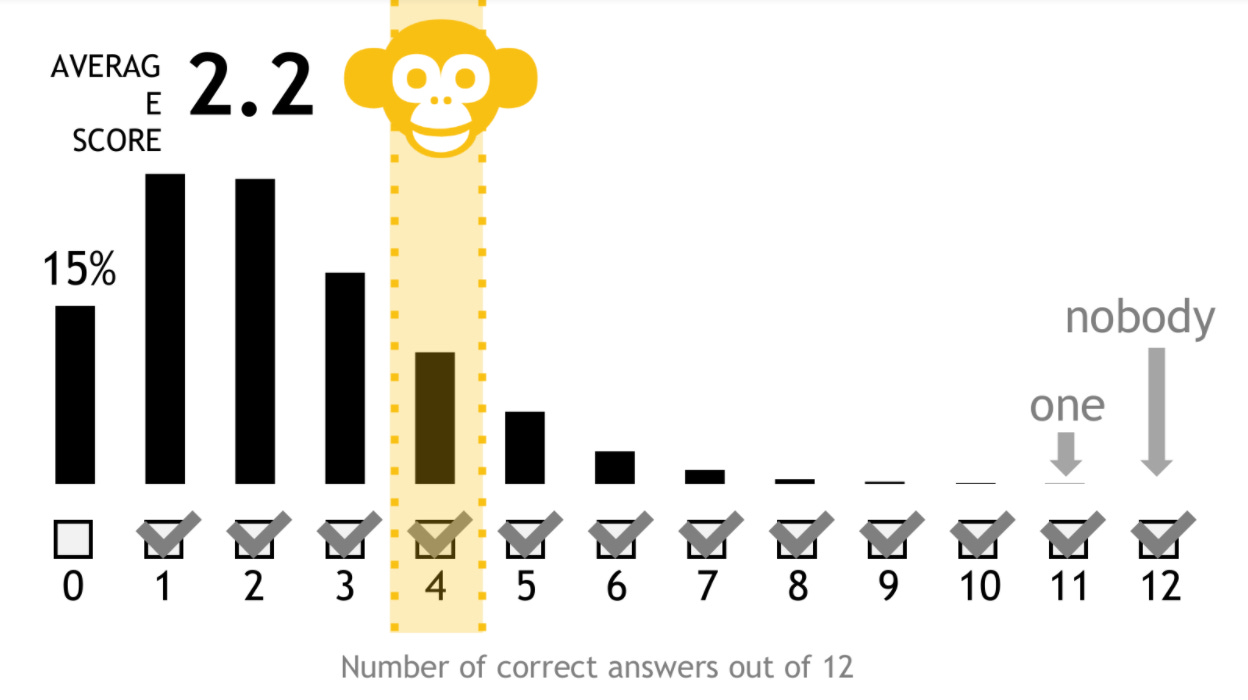
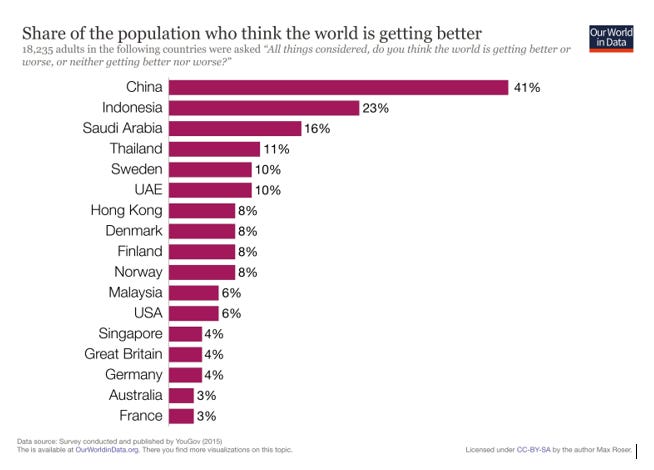
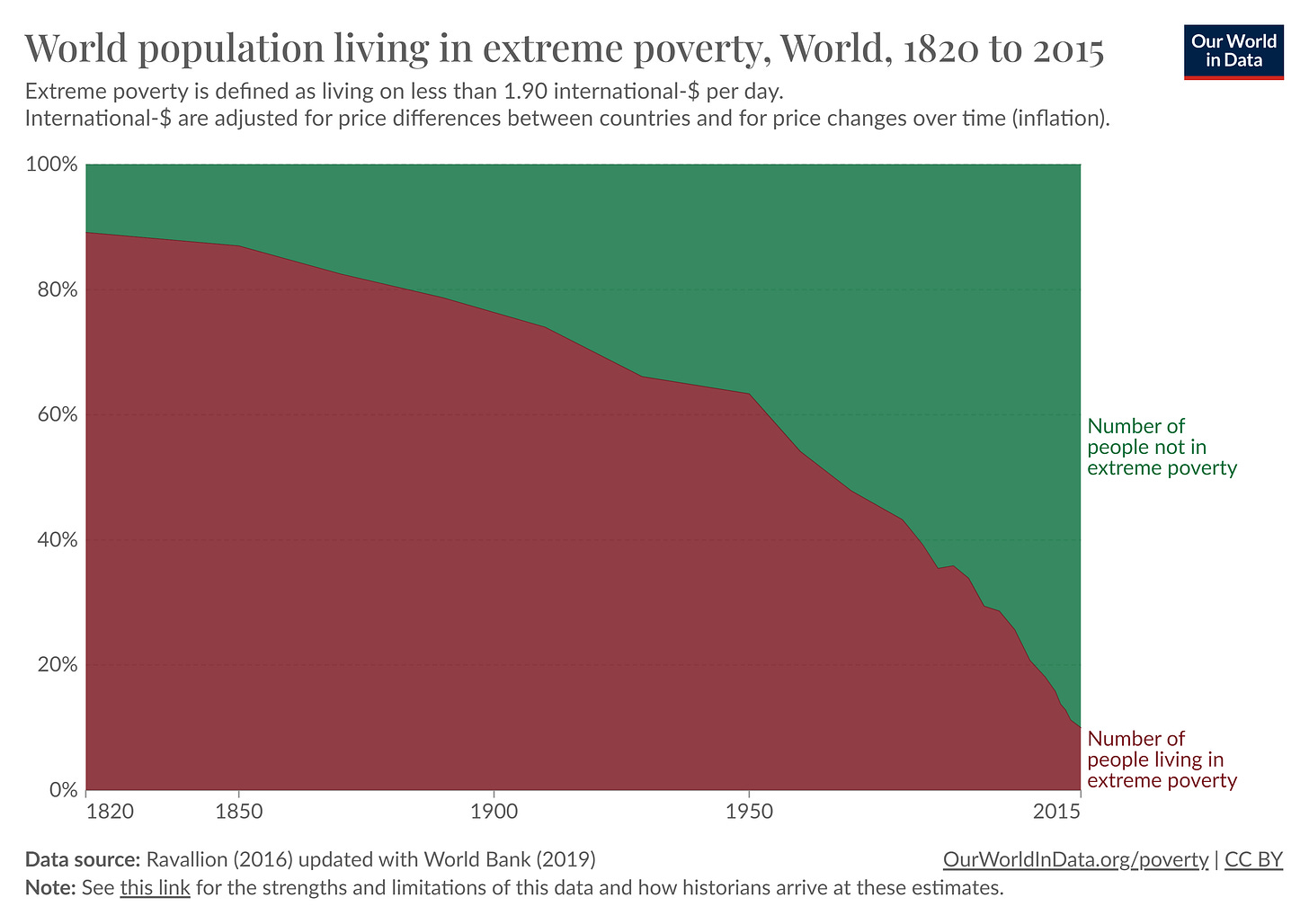
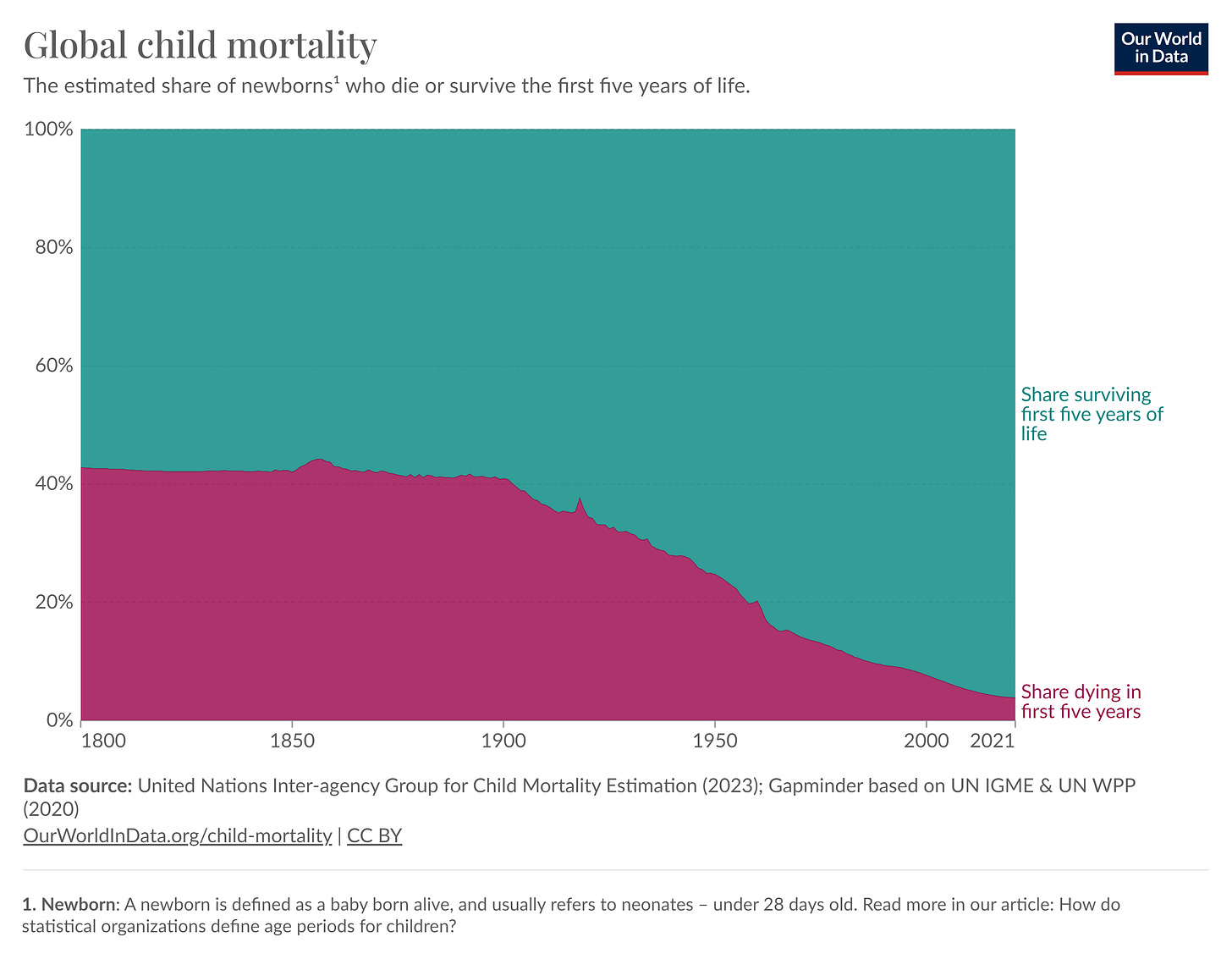
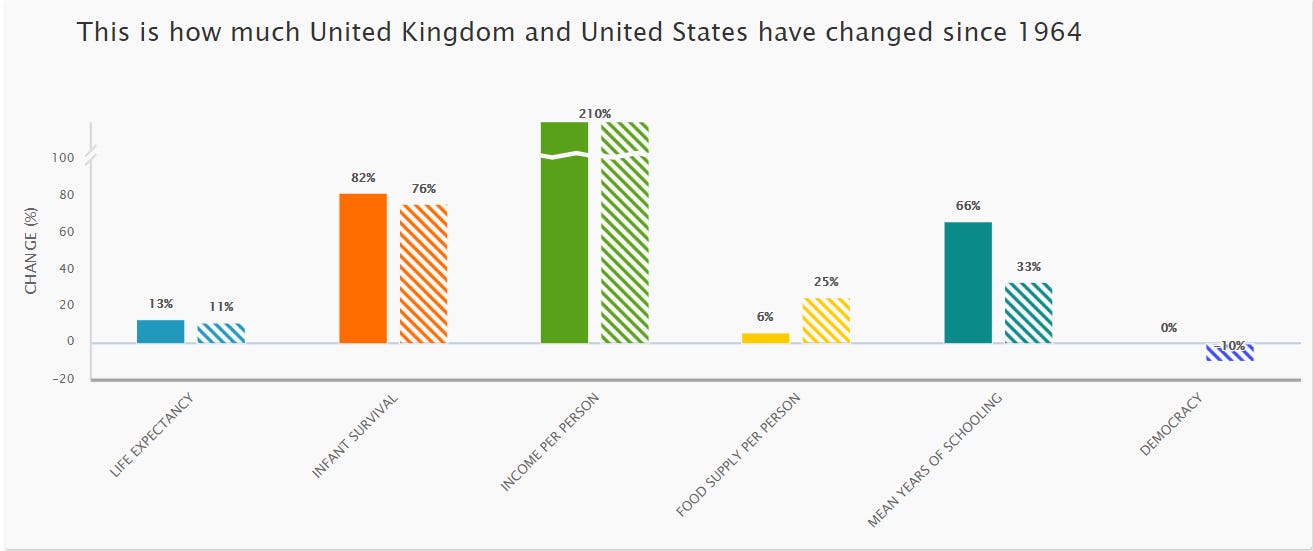
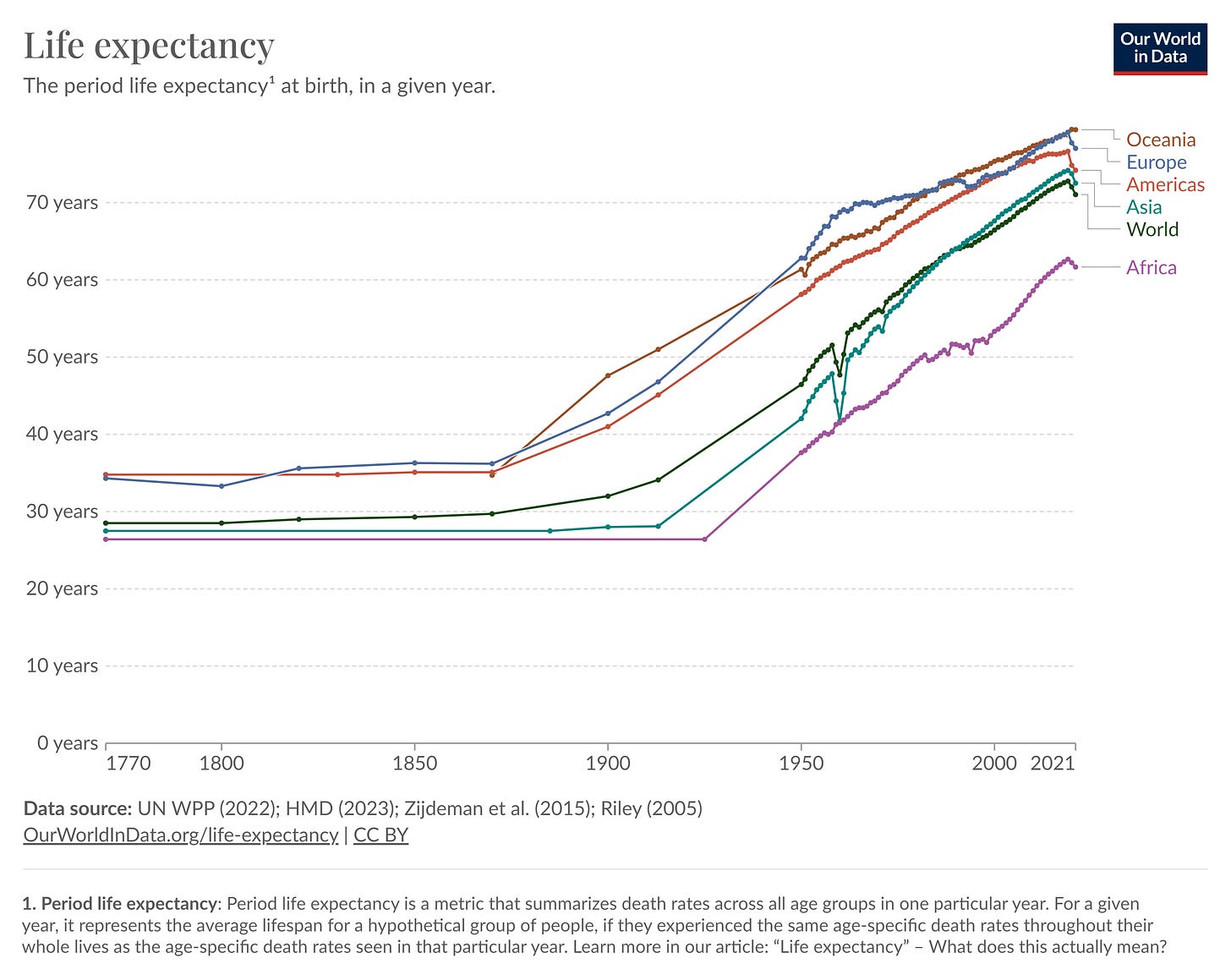


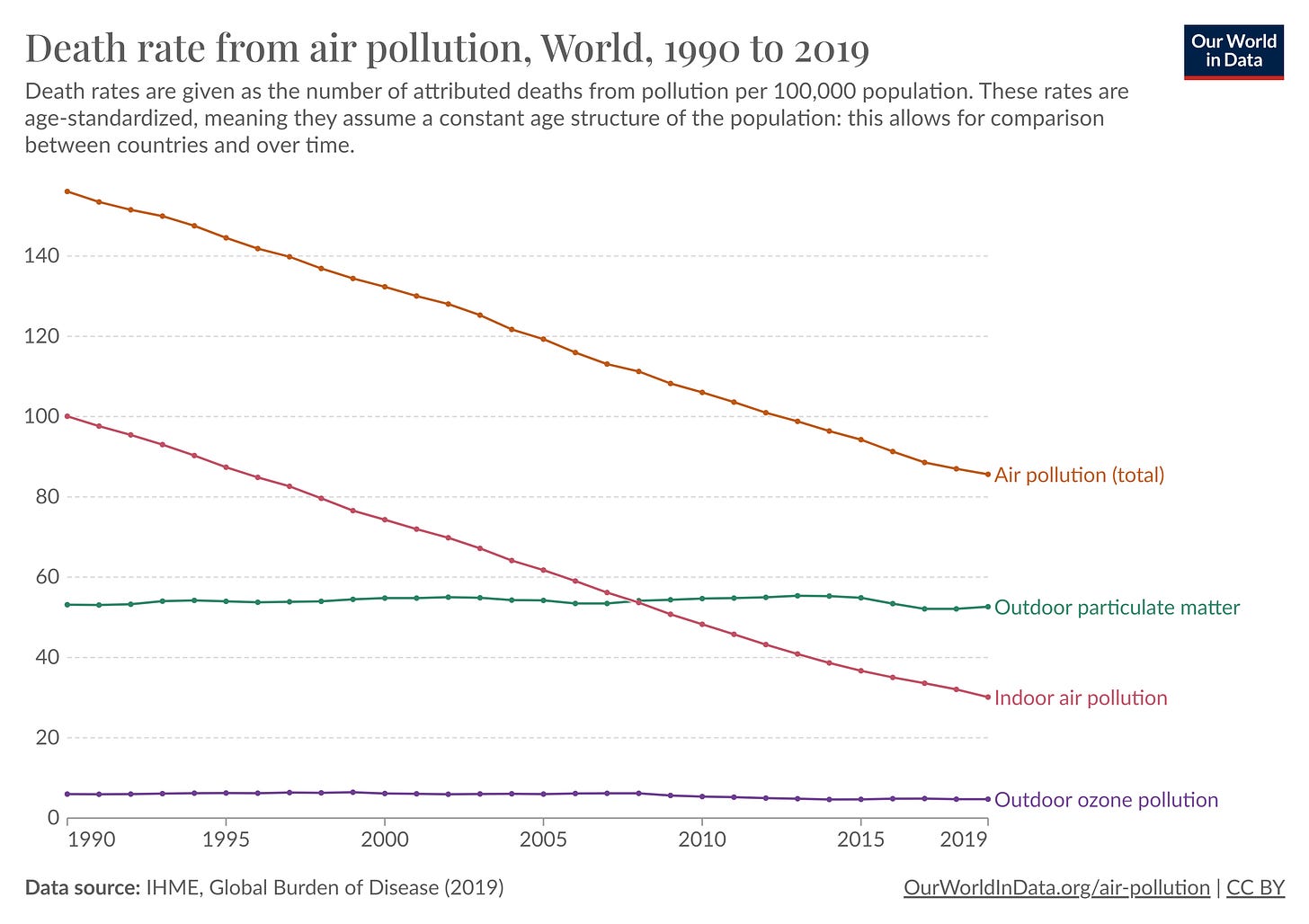

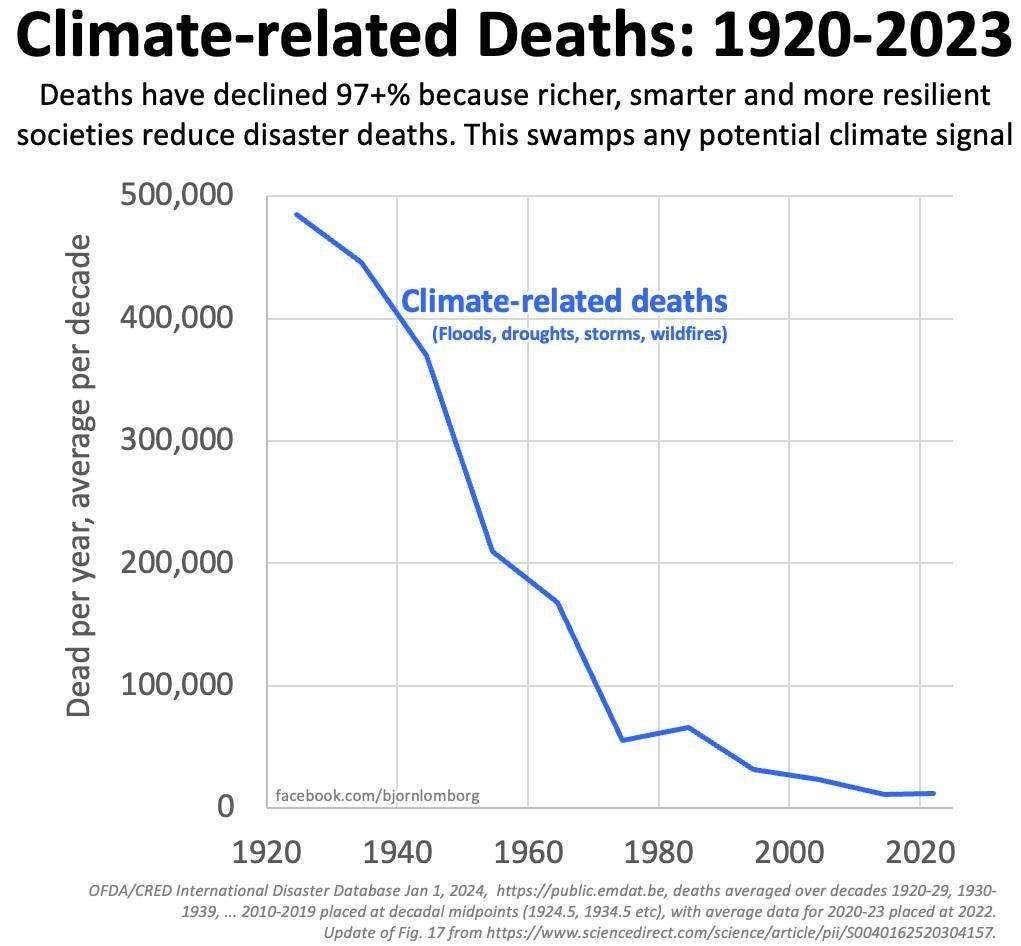

A couple of the charts were duplicated. Sorry about that. Fixed now.